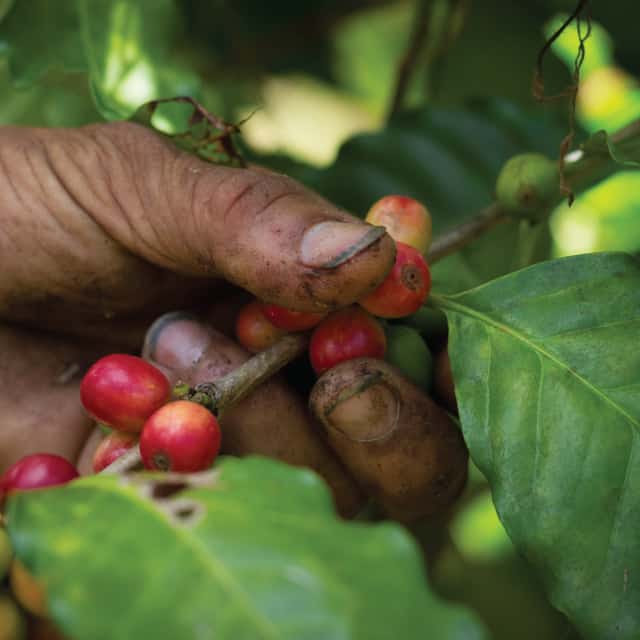Coffee Zone
This digital archive encompasses the oral histories of coffee pickers, farmers, hacendados (owners of vast farming land), women and teens from the mountainous western area of Puerto Rico known as the coffee zone. This archive is the first to record and preserve the coffee zone’s dialect and oral histories. The collection also includes the ways in which women in the coffee industry have handled the micro-changes in their community, and how these changes have played a role in the preservation, and sometimes annihilation, of the coffee zone’s dialect.
Historically, coffee farming has been closely associated with the social, cultural and economic stability of the western mountainous zone of Puerto Rico. The island’s coffee industry was thriving until the eighties. But due to high production costs, lack of international marketing and dwindling availability of manual labor Puerto Rico’s coffee industry is on the wane. People from the coffee zone are moving to other coastal areas either to work in factories or to study in urban universities to earn professional degrees, leaving behind their community and their traditional way of life.
The physical and social mobility happening in the coffee zone is endangering the cultural patrimony of a dialect that was preserved and sheltered by geographical isolation and the coffee industry for centuries. It has been imperative to document this dialect in order to preserve what is left and this digital archive, Del cafetal al futuro/From the Coffee Fields to the Future, exposes the oral stories, culture and phonological characteristics of a Spanish dialect and the people who speak it. This collection serves as a template for other researchers who are documenting similar endangered languages or dialects in other parts of the world. The website could also serve as course material in subjects related to globalization, environmental sciences, agriculture, economy, linguistic, anthropology, gender studies and education.
This website shows the linguistic characteristic of vowel raising, this is when mid-final vowels /e/ and /o/ are pronounced as [i] and [u] respectively. It is very common to hear people from San Juan or other coastal areas mocking people from the mountainous western region of Puerto Rico, also known as the coffee zone, about the way they raise vowels. One of the most common comments mocking this feature is: “La genti di Larih toma lechi di poti.” (People from Lares drink canned milk). Based on previous studies and my own observations as a native of Puerto Rico, I started to investigate this linguistic phenomenon in 2004, producing a doctorate dissertation, articles and several presentations. During the time of the mentioned study Puerto Rico had 11,000 coffee farms, but now after a decade there are only 4,000. The physical and social mobility happening in the coffee zone is endangering the cultural patrimony of a centuries old dialect that was preserved by geographical isolation and the coffee industry.
This website enhances our understanding on how seemingly unrelated areas, such as migratory patterns and a country’s economy, affect language. The study of threatened languages also has implications for cognitive science since it is the only way we can know how other communities store information and transfer experiences. According to the National Science Foundation, the only way to preserve endangered languages or dialects is by documenting them; once a language is lost a community’s history, culture and traditions disappear forever.
Acknowledgments
I gratefully acknowledge the Office of Research and Economic Development for supporting this research through an Arts and Humanities Initiative (AHI) Standard Grant.
Special thanks to all the coffee haciendas and to the many families and individuals who kindly donated their time for the interviews and share their stories to the world. I would also like to thank my family for their unconditional support during this process.
I am particularly thankful to the wonderful team that made this website possible at the Digital Scholarship and Publishing Studio at the University of Iowa Libraries, and I am also thankful for my efficient research assistant Mayela Zambrano.
Photographs are a courtesy of Josué Rodríguez from Hacienda La Lealtad

